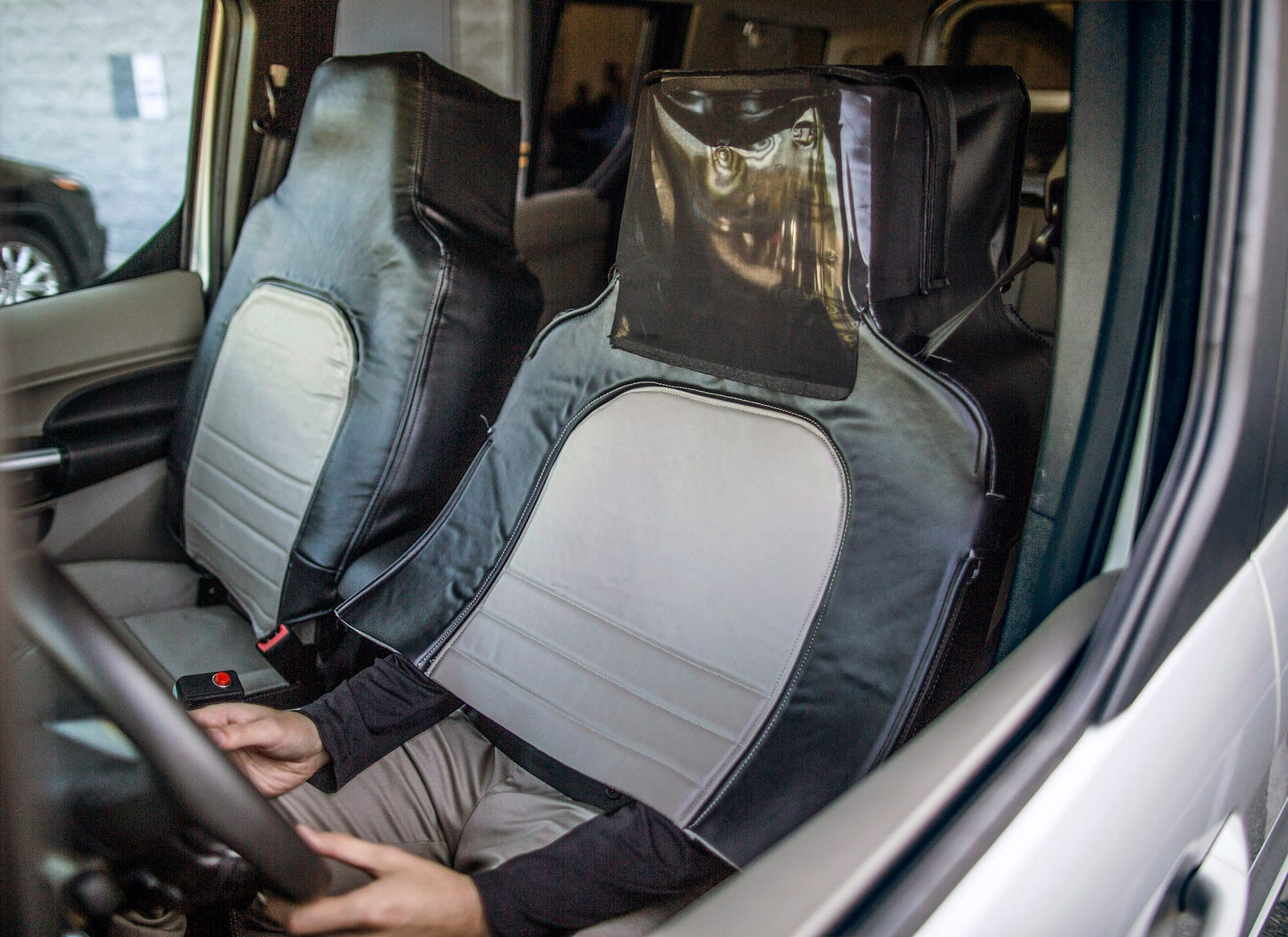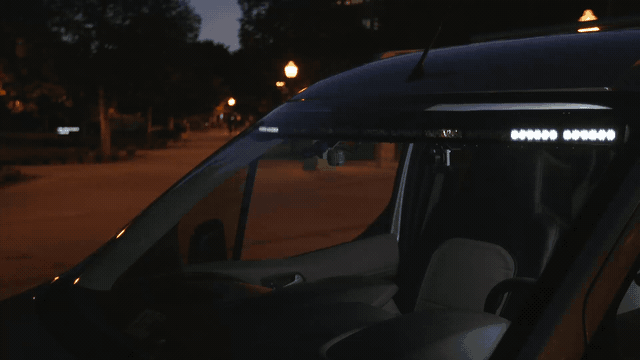Driving Cars Could Communicate with You in the Future
Anyone who has crossed a busy street likely knows the informal language between pedestrians and drivers. A driver might wave her hand to indicate to the pedestrian it’s okay to cross, or a pedestrian could throw up his hand like a stop sign to signal he plans to cross first.
But what happens in the future, when self-driving vehicles operate without drivers — and in some cases, without anyone even in the vehicle itself?
At Ford, we believe developing self-driving vehicles is about more than just the technology itself, so we’re working to design, test and advocate for a standard way for autonomous vehicles to easily communicate their intention to people on the streets and roads on which they will operate.

We’re teamed up with the


Our simulated self-driving Transit Connect was equipped with a light bar on top of the windshield — near where a pedestrian or bicyclist would look to make eye contact with the vehicle’s driver. The signal slowly pulses a white light back and forth if it is yielding, blinks rapidly if it is about to accelerate from a stop, or remains completely solid if it is in active self-driving mode, meaning it is simply driving along the road like any other vehicle.


If you came across an autonomous vehicle signaling this way today, you might be confused, because you’ve likely never seen these signals before. Wouldn’t it be easier to just have scrolling text to signal what a vehicle plans to do? Or to use green, yellow and red lights to indicate whether a vehicle is going, yielding or stopping? Actually, there are good reasons we designed the signals the way we did.
First, there are thousands of languages throughout the world, and many countries have more than one official language, which makes it nearly impossible to ensure text can effectively communicate with the greatest number of people.
Second, human-driven vehicles currently communicate what they are doing, and not what others, such as pedestrians, should do. Red brake lights indicate a vehicle is slowing or stopping. A turn signal indicates it is turning right or left. So, it doesn’t make sense to tell pedestrians and other drivers what to do because vehicles don’t do that now.
Third, many regulators around the world restrict what colors can be used on the front of a vehicle, so white or amber is the best option.
(We also recognize the need for communication with those who are blind or visually impaired, and we are researching potential solutions in a separate project.)
Virtual reality testing with customers shows it takes a couple of exposures to signals like these before people truly understand what they mean. It takes even longer for signals to become ingrained in people’s brains — second nature, if you will. Through our testing, we believe these signals have the chance to become an accepted visual language that helps address an important societal issue in how self-driving vehicles interact with humans. With self-driving vehicles in development, now is the time to come together to create an industry standard, to begin the consumer education process, rather than wait for the first autonomous vehicles to be integrated into a community landscape.
Our light signals still need to undergo a significant amount of research, but we believe an aligned industry and development of a global standard is critical to support eventual deployment of self-driving vehicles. That’s why we’re working with several industry organizations, including the International Organization for Standardization and SAE International.
Through our testing, which to date encompasses more than 150 hours and approximately 1,800 miles in a dense urban area, preliminary results suggest there may be a societal benefit to creating one standardized language. And as we dig deeper into this subject, our goal is to help society work toward accepting a future of self-driving vehicles.
